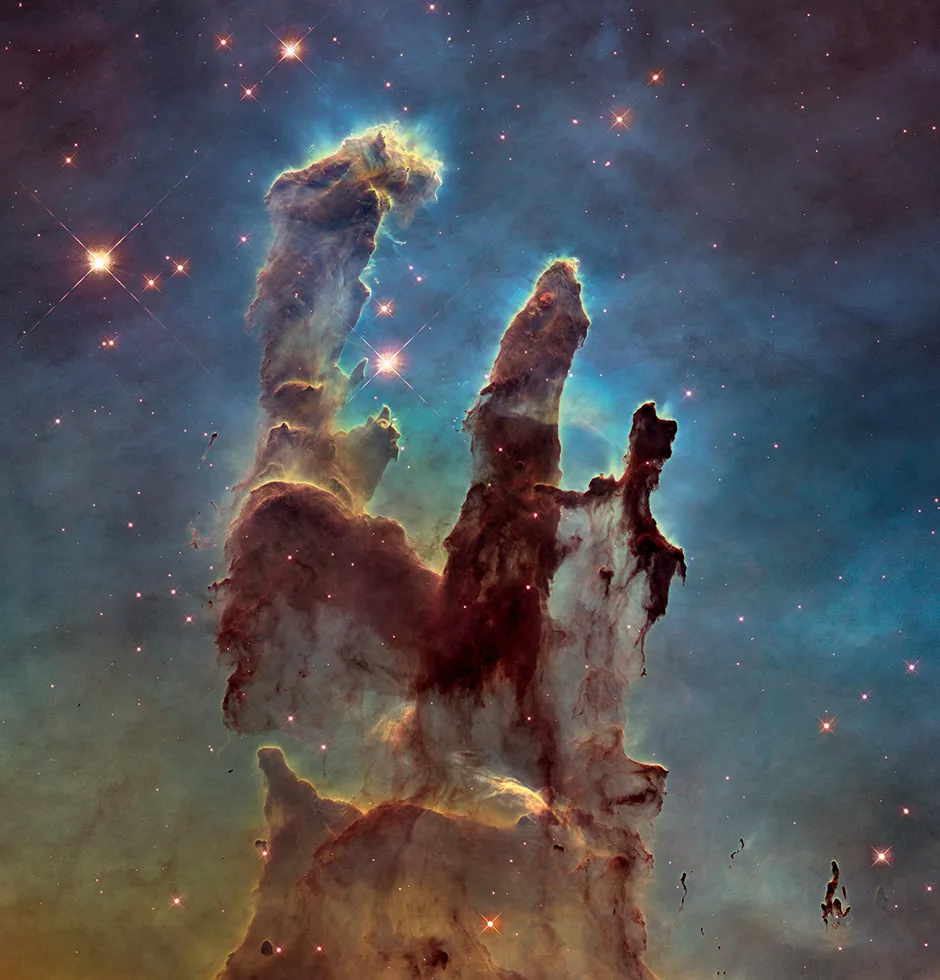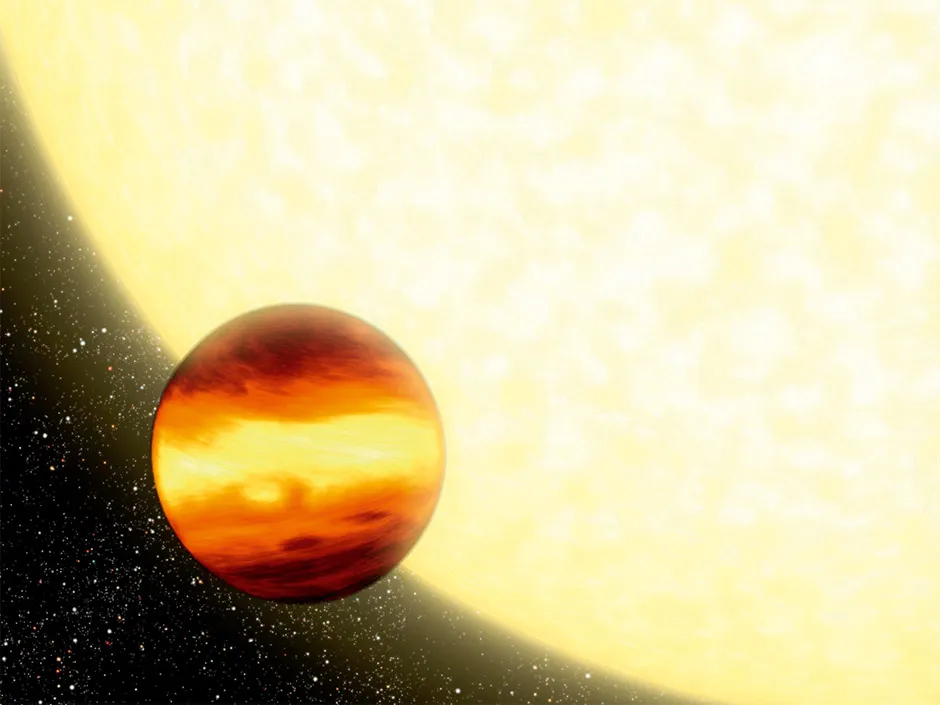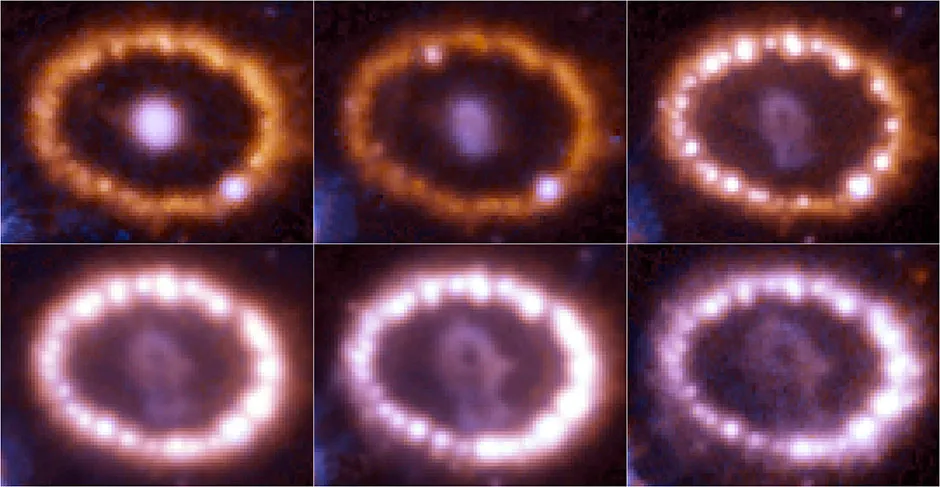The Milky Way is home to some incredible sights. From the dusty beauty of stellar nurseries to the colourful detritus left after a star explodes, Hubble has helped to reveal the beauty of our Galaxy. Yet these images are not only stunning to look at. To an astronomer’s eye, these photographs tell the story of a star’s life.
The tale begins soon after the Hubble Space Telescope launched 30 years ago, when it first turned its eye towards some of the clouds of dust dotted throughout our Galaxy. Astronomers believed that these were stellar nurseries, the places where every star in our night sky began its life.
The most famous image of one of these birthing grounds (and perhaps Hubble’s most famous shot ever) is of the Eagle Nebula, M16 (pictured below). The image, taken in 1995, is better known as the Pillars of Creation, inside which new stars are starting to form.

“We see these pillar-like structures in many Hubble observations of these nebulae,” says Jennifer Wiseman, Hubble’s senior project scientist. “The wind from massive newly formed stars carves out these structures around the bigger clumps in the gas that is left behind.”
By studying the shapes of these cloud formations, astronomers were able to unpick these critical early stages in a star’s life. Partly, they’ve done this by watching how the clouds have changed over the last 20 years.
In 2015, a new version of the same image revealed that one of the jets within the cloud had grown by almost 100 billion kilometres, demonstrating just how dynamic these regions truly are.
Read more about the history of Hubble:
- Black holes and dark energy: how Hubble discovered the Universe's darkest secrets
- How Hubble gave us a new perspective on the planets
Even more excitingly, when Hubble took a closer look at some of the Orion Nebula’s infant stars, it found several of them had disks of swirling dust – a sign they were entering the next chapter of their lives and forming planets.
Observing alien worlds
As a star grows, it often forms a protoplanetary disk of dust around it. Over time this debris clumps together, gradually growing in size to eventually become a planetary system.
Studying these disks is a vital step in one of the fastest growing study areas of astronomy: exoplanets, the planets that exist in other solar systems.
“When Hubble was designed there was no concept that it would be used to study planets outside our Solar System. We didn’t know of exoplanets at that time,” says Wiseman.
Since the first exoplanets were discovered back in the 1990s, over 4,000 worlds have been confirmed; a number which grows every day. Tracking these planets down requires looking at large areas of sky for a long time.
With its narrow field of view and the high-demand for its time, Hubble is ill-equipped for this task. But it can take a deeper look at planets other observatories have already discovered.

“Hubble’s pioneering contribution is in analysing the atmospheric composition of these exoplanets,” says Wiseman. “It does this by looking at an exoplanet as it passes in front of its parent star. During that transit, light from the star passes through the outer regions of the atmosphere. Some of that light is absorbed by the atmosphere of that planet and that signature is still in the light received by Hubble.”
By pulling this signature apart, astronomers are able to detect several key elements and molecules within a planet’s atmosphere. One important molecule that Hubble is especially suited to look for is water.
Read more about Hubble's great discoveries:
On Earth, wherever you find water, you find life. So astronomers are keen to pin down how many other planets are as wet as ours in the hope of predicting where else in our Galaxy we might find life.
Hubble’s resolution is so great that it can even create a basic outline of the weather patterns on a planet’s surface. When the telescope looked at tidally locked WASP-43b, where one side of the planet always faces its sun, it was able to pick out the hot patches on its eternally sunlit side. Using this, astronomers were able to predict how the winds of the planet blow between the day and night sides.
But just as Hubble reveals the origins of stars and planets, it has also turned to the pages of their final act. When a star’s nuclear fuel is expended, they die. If the star is large enough, this death is an explosive affair known as a supernova. Once again, Hubble’s power lies not in first detecting these cosmic flashes but in taking a look at them afterwards.
Supernova studies
Throughout their lifetimes, stars transform the hydrogen created in the Big Bang into helium and other heavier elements. When the star goes supernova, it throws these elements outward.
As the hot cloud of gas crashes into the surrounding medium it creates an advancing shock wave, lit from within by a white dwarf – a small hot star, all that remains of the exploded stellar body. As these gas bubbles look fuzzy and spherical from Earth, they were initially mistaken for planets, leading them to be called ‘planetary nebula’, despite having nothing to do with planets.
In 1987, just before Hubble launched, a supernova detonated in the Milky Way’s companion galaxy, the Large Magellanic Cloud. Over the years, Hubble has watched as the ring of gas from this explosion has moved out and expanded into the interstellar medium – the gas which fills the space between the stars.

The turbulence caused by these shock waves can, in time, cause the interstellar medium to gather together. This new cloud, enriched with all the elements the dying star threw out into the Universe, then goes on to form stellar nurseries, bringing the cosmic tale of stellar life back around to its beginning again.
The Milky Way is a dynamic place, filled with stars being born, forming planets and then dying, only for their remains to provide the fuel to repeat the cycle again. And Hubble has been critical to observing every step of this incredible process.
From BBC Sky at Night Magazine:
- Hubble at 30: three decades of the famous space telescope
- 'How we serviced Hubble': Mike Massimino reveals all
- How Hubble’s successor the James Webb Space Telescope will observe the Universe
- Astronaut Kathy Sullivan on launching the famous space telescope
- What was wrong with Hubble’s mirror, and how was it fixed?
- Radio Astronomy Podcast: 30 years of the incredible space telescope
- How did the space telescope come about?
- What Hubble's launch meant to me, as an amateur astronomer
- How Hubble changed our view of the Universe
- Why did astronauts service the Hubble Space Telescope?
- How the Hubble Space Telescope is used to study exoplanets
- A history of the Hubble Space Telescope
